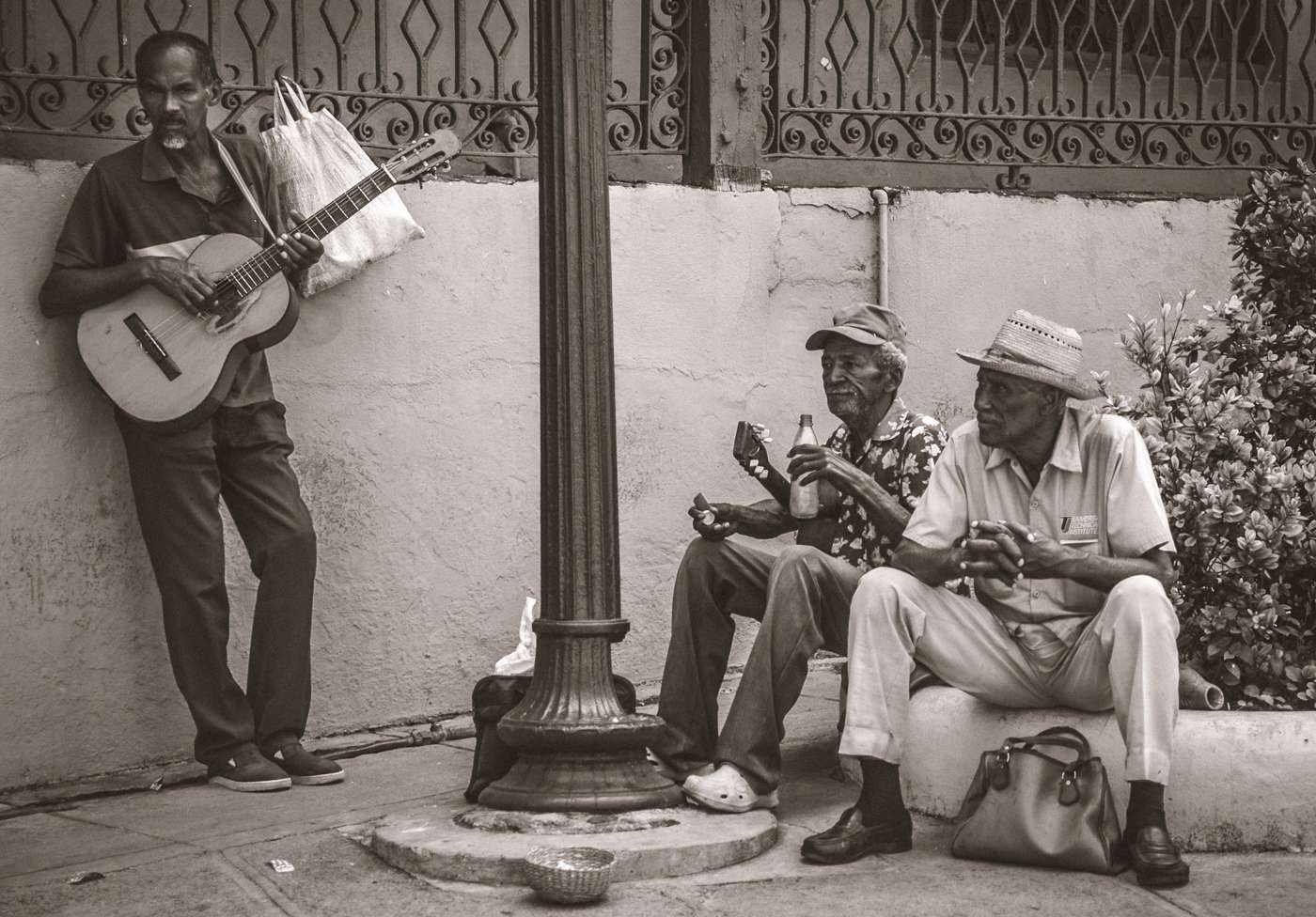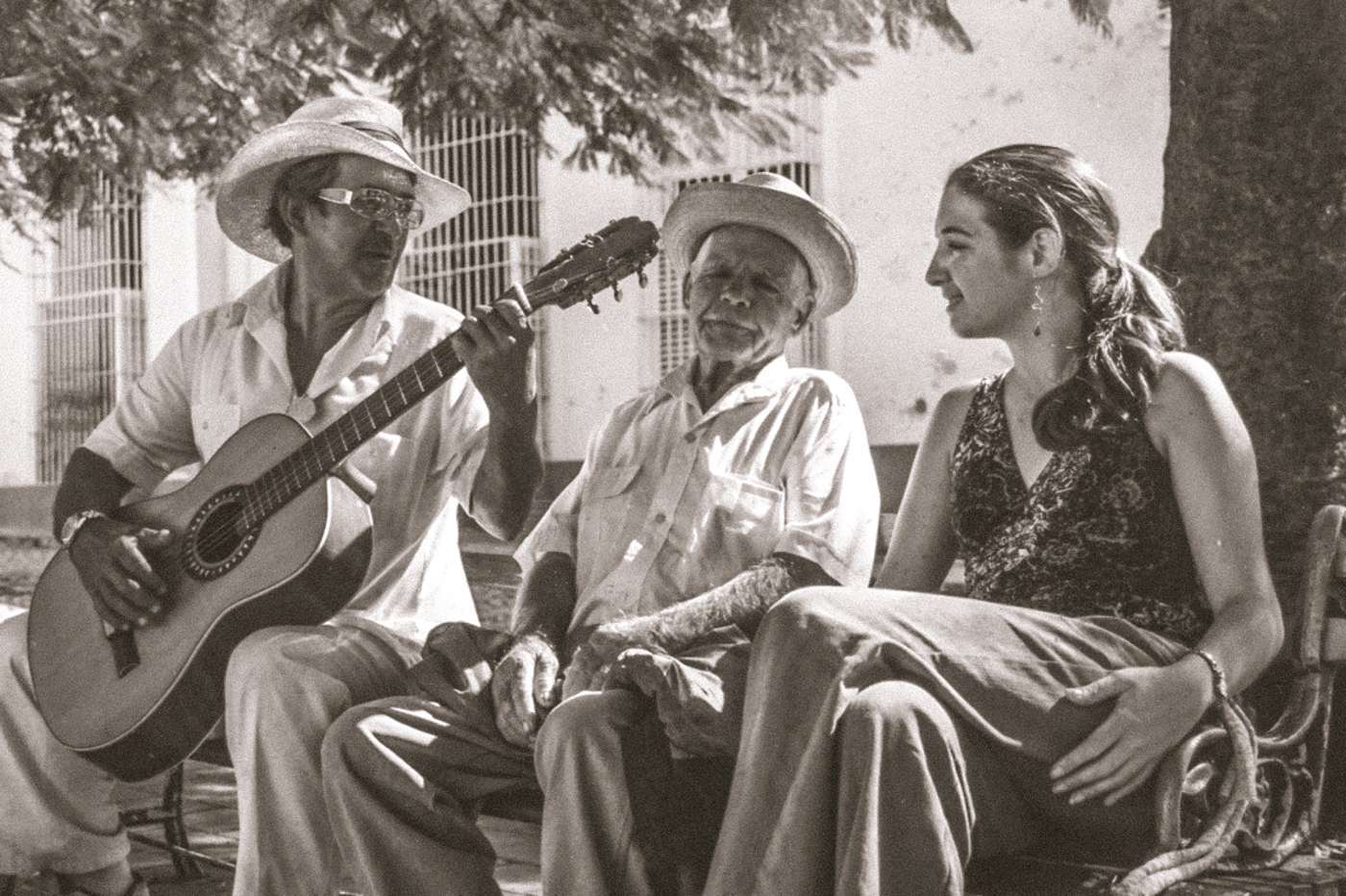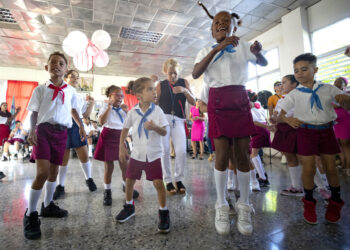In October 2020, May 8 was officially declared in Cuba as the Day of the Cuban Son. It is a tribute to a vocal and instrumental genre of great popularity and influence on and off the island. The initiative came from Camagüey’s Adalberto Álvarez (1948-2021), rightly known as “El Caballero del Son,” one of the most constant musicians in the defense and promotion of this musical-dance expression.
“May 8 is a representative day since we commemorate the birth of Miguelito Cuní (1917-1984) and Miguel Matamoros (1894-1971), that is why this date was proposed,” the National Music Award winner (2008) and author of songs as well known as “A Bayamo en coche,” “Son para un sonero” or “El son de la madrugada.”
It is impossible to talk about Cuban popular music without mentioning the contributions of this genre, which represents us worldwide as much as the mambo, the cha-cha and the danzón. Said in the style of the guarachera and sonera Celia Cruz: He who never wanted to hear Matamoros / and never choired his Son de la Loma / shouldn’t sing it now. / And he who never loved the King of Rhythm, the great Benny Moré / what a bad Cuban he is. / Because the son is from Cuba / and those who feel Cuban / carry it in their hearts.
Next, we take a tour of the origins of the son and present some opinions of experts and performers of this very Cuban genre.
“The son that has no end”
Cristóbal Díaz Ayala (1930) is an authoritative voice on issues related to Cuban music. The extraordinary collector is the author of several books such as Cuba canta y baila, discografía de la música cubana 1898-1925, Cien canciones cubanas del milenio, Los contrapuntos de la música cubana, among others that exhaustively analyze the birth and development of our popular rhythms. One of the most important pillars of maestro Díaz Ayala to Cuban and Latin American culture is his collection of books, records, among other materials, donated to Florida International University (FIU) in 2001.
In a conclusive way, maestro Díaz Ayala maintains that the son “is the most important musical genre of Cuban music” and that, although some researchers have given it an ancient origin, dating back to the 16th century, in 1971 the musicologist Alberto Muguercia proved with solid argumentation the fallacy of such a theory. The son was born in the mountainous area of the Sierra Maestra in the second half or the end of the 19th century.
And he adds:
“The son arrives in Havana in 1909, when the Permanent Army was created by President José Miguel Gómez, precisely one of its objectives was to uproot the soldier from his point of origin, moving the troops to serve in places distant from their place of origin. Thus, apparently, a group from the eastern region of Cuba who cultivated the son ended up in Havana.”
Another notable researcher, the musicologist María Teresa Linares, when referring to the origins of the son, points out: “The son was a simple dance, with a form based on a fixed scheme by the chorus and an improvised, variant motif, by a soloist. Motifs that were called ‘montuno,’ because they came from the countryside, from the mountainous interior, from the mountains.”

Already in the 192Os, the son burst into Havana with definitive success and among its greatest exponents is Miguel Matamoros. Let’s examine what the noted researcher and saxophonist Leonardo Acosta said:
“But the son is transformed in the capital, where the sextet and then septet format prevails. The Sexteto Habanero, the Sexteto Occidente led by María Teresa Vera, the Sexteto Nacional (later Septeto) led by Ignacio Piñeiro and others that also appear all over the island did not take long to stand out.”
In all these years, figures of great impact in music appeared on the scene, such as Piñeiro, who, according to Leonardo Acosta himself, was the first to achieve a rapprochement between the two basic popular genres of Cuban popular sound: the rumba is from the western region and the son from the eastern region.
“Piñeiro becomes, therefore, if not the father, then the grandfather of salsa, because of this synthesis and fusion and not because he coined the term in his famous Échale salsita,” he asserts.
From then on, Cuba became a sonera from one end to the other. Different musicians, interpreters and groups emerged, that throughout the 20th century and so far in the 21st have made the son their own, uniting it with other rhythms, but always respecting its essence.
The son, like very few genres, traveled and settled triumphantly in the United States, Puerto Rico, Venezuela, Colombia and Mexico, demonstrating its durability. His exponents, endowed with grace when it comes to improvising, demonstrated mischief, good voice and dancing skills, became enormously popular in Latin America and Europe.
The son also reached the movies and served as an inspiration to poets. The most vivid example is in the work of Nicolás Guillén and his titles “Sóngoro cosongo,” “Motivos de son” and “El son entero.”
After 1959 the son did not leave Cuba, as some exclaimed. After the migratory wave, the island continued dancing and contributing new son musicians that achieved worldwide recognition. The founding of the groups Son 14, in 1978, and Adalberto Álvarez y su Son, in 1984, demonstrate how alive the genre remained among musicians and dancers.
For an in-depth study of this topic, OnCuba suggests the titles: La Habana tiene su son y El son no se fue de Cuba: claves para una historia 1959-1973, by authors Ricardo R. Oropesa and Adriana Orejuela, respectively.

The son is a reflection
Mayelín Naranjo is a Cuban performer living in Spain with her husband, the musician Jorge Antonio Vázquez Varona. In each concert, they offer in that country and other European countries, classic son songs cannot be missing from their repertoire.
“In our musical work, its strength arises naturally,” she affirms and adds: “The son is alive, its flavor continues to captivate the whole world, however, even if it does not lose its validity, it must be carefully observed that other musical styles, especially those related to electronic music, currently make a large part of the international market cheaper. It is a sacred duty that we defend the life of the Cuban son. Let’s work for it, let’s bring modernity to it, creating new son works with respect for our tradition, our cultural roots.”
On the other hand, radio broadcaster and researcher Lázaro Caballero Aranzola, author of the book ¡De película! Rolando Laserie, tells us:
“The son is a reflection of the cultural mix of the Cuban nation that treasures the African and Spanish imprint. And there is where another of the repeated affirmations linked to the genre flourishes: to be a good son musician you have to be a good rumbero, another sign that our musical richness is comprehensive and multidirectional. Some tenement house rumba enriched with Spanish elements of the ballroom, wind instruments and a catchy cadence, all of which has made several generations vibrate. However, it is at this point that I would like to underline that I currently perceive insufficient support for the dissemination of son through radio and television. It is essential to promote the roots of such a valuable jewel of our culture, an expression of what is most genuine that distinguishes us. The son is a sample of how we are and, after all, it is the most sublime thing for the soul to have fun.”

To celebrate this day OnCuba recommends the following playlist, with eight of the golden songs of the Cuban son that you cannot miss:
- Suavecito by the National Septet of Ignacio Piñeiro.
- Escucha mi son by Miguelito Valdés.
- Mi son cubano by Guillermo Portabales.
- Son al son by Elena Burke.
- El son de la madrugada by Son 14.
- El son de Adalberto by Oscar D’León.
- Sin clave no hay son by Celia Cruz.
- Te traigo mi son by Ray Barreto.










